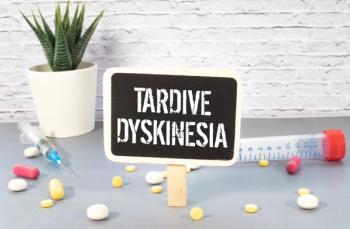
Bone Density Negatively Impacted by ADHD Drugs
Recent research determined the psychostimulants modafinil, atomoxetine, and guanfacine negatively impact bones.
A recent study investigated the effect of psychostimulants modafinil, atomoxetine, and guanfacine on the differentiation of mesenchymal stem cells to osteoblasts and on their cell functions, including migration. Researchers determined that the 3 medications commonly used to treat attention-deficit/hyperactivity disorder (ADHD) negatively affect hMSC differentiation to bone-forming osteoblasts and cell migration through different intracellular pathways.1
With an increasing number of children and adolescents receiving a diagnosis of ADHD,2 and 60% of children continuously affected by ADHD into adulthood,3 the potentially high number of patients with controlled or uncontrolled use of psychostimulants increases the impact of possible adverse effects.1 Previous research has shown that the early ADHD drug methylphenidate, another cognitive enhancer inhibiting the DAT and NET system, influences bone metabolism negatively by causing a growth reduction of 1.38 cm/year and decreasing the mineral density of bone tissue.4
Researchers monitored the expression of NET and DAT receptors in hMSCs to determine the ability of modafinil, atomoxetine and guanfacine to disrupt the physiology of bone cells.1 Transcript expression of human beta-2 adrenoreceptor was strongly increased compared to other receptors in hMSC and in hOB, the researchers reported. Additionally, they detected significant amounts of the majority of alpha- and beta adrenoreceptors (ha1-AR, ha1B-AR, ha1D-AR, ha2-AR and hB3-AR), and the norepinephrine transporter (NET) and the dopamine transporters D1 and D2, consistent with the findings of Ma et al.5
Researchers then hypothesized a possible effect of modafinil, atomoxetine and guanfacine on both mesenchymal stem cells and osteoblasts. As such, they chose to analyze the influence of the medications on osteogenic differentiation. “Modafinil and guanfacine caused a significant upregulation of the transcript of RANKL and significant downregulation of the OPG transcript,” they reported.1
They also compared the effects of the medications on cell viability and apoptosis/necrosis, cell migration, and the osteogenic differentiation of differentiated bone cells derived from hMSCs, to illuminate the mechanism of bone formation inhibition. Although the administration of the maximum therapeutic plasma concentration of modafinil, atomoxetine, and guanfacine caused a significant reduction of cell viability, neither induction of apoptosis nor necrosis could be observed in hMSCs. Within 72 hours after treatment with modafinil, atomoxetine, and guanfacine, cell viability recovered.
Researchers also studied the effect of ADHD medication on cell migration. Modafinil, atomoxetine, and guanfacine abolished the cell migration, therefore meaning these compounds could impact bone formation, wound healing, and bone remodeling/repair—as all require stem cell migration.6-8
The in vitro design limited this study. Researchers recommended future studies in vivo, potentially “using a fracture healing model in the mouse/rat to simulate the homing function of the hMSCs and studying the influence on bone healing via in-vivo CT analysis and bone histology of different stages of bone healing.”1
Results determined therapeutic plasma concentration of modafinil, atomoxetine, and guanfacine impaired the cell migration of hMSCs, via beta-2 agonism for modafinil and atomoxetine. The drugs also caused a significantly decreased matrix calcification without promotion of apoptotic cell death.
References
1. Wagener N, Lehmann W, Weiser L, et al.
2. ADHD statistics: numbers, facts and information about add. ADDitude. Updated July 13, 2022. Accessed October 13, 2022.
3. Callahan BL, Bierstone D, Stuss DT, Black SE.
4. Uddin SMZ, Robinson LS, Fricke D, et al.
5. Tyurin-Kuzmin PA, Fadeeva JI, Kanareikina MA, et al.
6. Su P, Tian Y, Yang C, et al.
7. Aragona M, Dekoninck S, Rulands S, et al.
8. Iaquinta MR, Mazzoni E, Bononi I, et al.
Newsletter
Pharmacy practice is always changing. Stay ahead of the curve with the Drug Topics newsletter and get the latest drug information, industry trends, and patient care tips.





























































































































